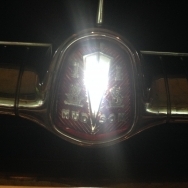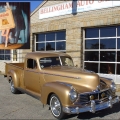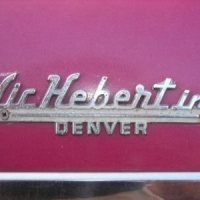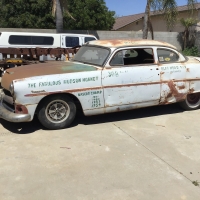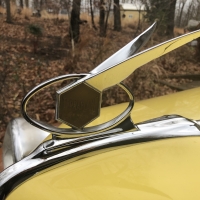starter informations
I'm trying to start my 54 Super Wasp after being asleep for at least 6 months, but I've no luck so far.
The starter has been rebuilt during the winter, the battery is in good condition and I even changed the ground strap and the negative lead and yet, the car don't want to start: it did crank well, but won't start. the fuel system does work well too and lately the starter is making a sort of grinding noise that I don't like ( Bendix issues ?).
Is there something I'm missing or done wrong for the car to finally wake up from its slumber? Your help would be appriciated.
Max
The starter has been rebuilt during the winter, the battery is in good condition and I even changed the ground strap and the negative lead and yet, the car don't want to start: it did crank well, but won't start. the fuel system does work well too and lately the starter is making a sort of grinding noise that I don't like ( Bendix issues ?).
Is there something I'm missing or done wrong for the car to finally wake up from its slumber? Your help would be appriciated.
Max
0
Comments
-
I just worked on a neighbor's 1952 Pacemaker who had starting issues (among many others). It cranked slowly due to undersized battery cables on its 6 volt electrical system. How it applies to you is that as slowly as this car would crank, we still got it started once we started to address the flooding issue. This car had a 6-8 psi electric fuel pump feeding the carburetor (of course this needs to be changed to something that is more in the 3-4 psi range).Try holding the accelerator down while you crank or carefully wedge the choke plate open to get it started. I am assuming that you checked the condition of the points and made sure you where getting spark at the spark plugs (crank with one out and grounded on the engine block).The Bendix could be dragging. Try flushing it with an aerosol "dry" lubricant that leaves behind a Teflon or lithium grease film. The carrier solvent will flush much of the "gunk" off. Let air for a few minutes before firing up the starter to give the solvent time to evaporate off.0
-
Are you getting spark? When my cars sit for awhile I sometime have to run a point file across the points to clean them.0
-
Definitely one of the first things to check. ESPECIALLY if they are modern, Chinese made junk. They corrode while simply sitting.29sptphaeton said:Are you getting spark? When my cars sit for awhile I sometime have to run a point file across the points to clean them.0 -
The car does still have its original mechanical fuel pump (combination fuel and vacuum pump style), no electrical fuel pump added on it. As for the grinding noise, it sounds like the bendix isn't geared well into the flywheel, which scares me lately.0
-
engine only engine only needs 3 things to start and run
compression
quality spark delivered at the appropriate time
fuel/air mixture of the proper ratio.
step by step, troubleshoot your way through the list. Don’t throw parts at it, test, verify and fix
a properly tuned Hudson engine with a 6v battery will fire so quickly you won’t have time to get your finger off the start button after a momentary push.
regards, Tom0 -
Update: I've checked the points and it's making sparks so far and right now I'm checking the ignition coil. If I do remember, you can check its circuits (primary and secondary) with a multi-meter set on ohm but I don't know the reference measures. From my quick check it is 1.2 ohms on the primary and 5.95 kilo-ohms on secondary (or maybe the other way around, I'm not quite familiar with it yet).
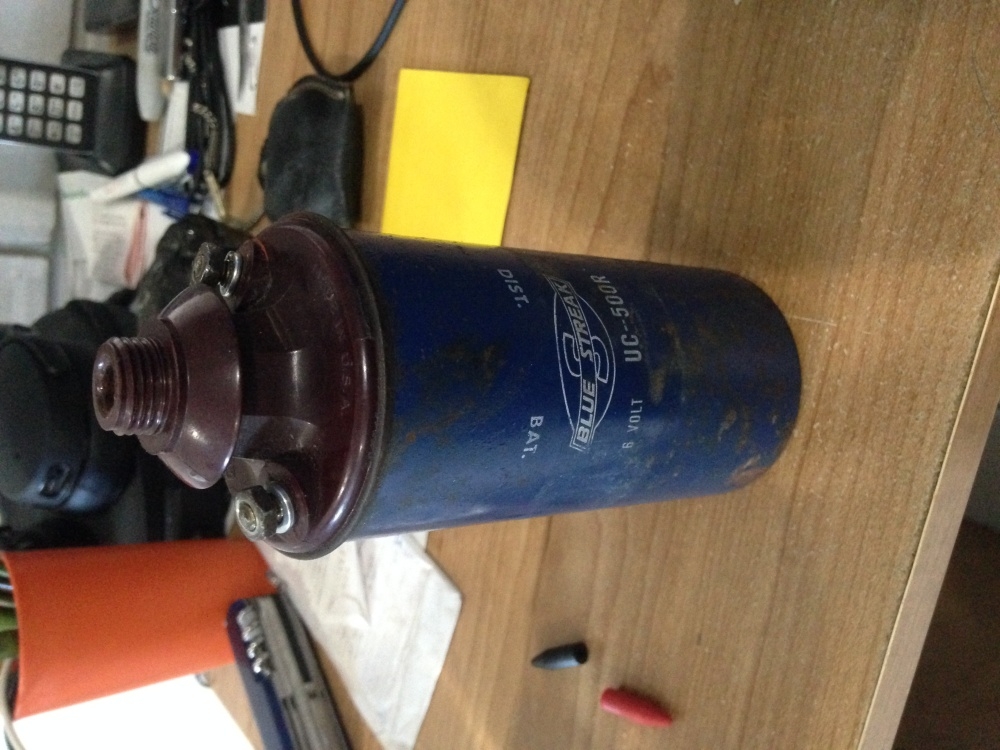
Are those measures good or did I messed up the coil field check? Your inputs are welcome.
Max0 -
Max, the value of testing a coil by checking resistance has been the subject of MUCH debate on forums everywhere. Many have concluded any result other that 0 or infinite are inconclusive. You're probably better off visually checking for a spark across the plug gap. At least that will tell you if you have enough spark to get ignition.0
-
I've put the coil back to it's place and seems to spark with key on. The reason I didn't crank the engine to check spark at the plug is due to an aggressive teeth grinding sound that seems to come from or near the starter while cranking and that sound is scaring me.
I do have a question regarding the starter itself: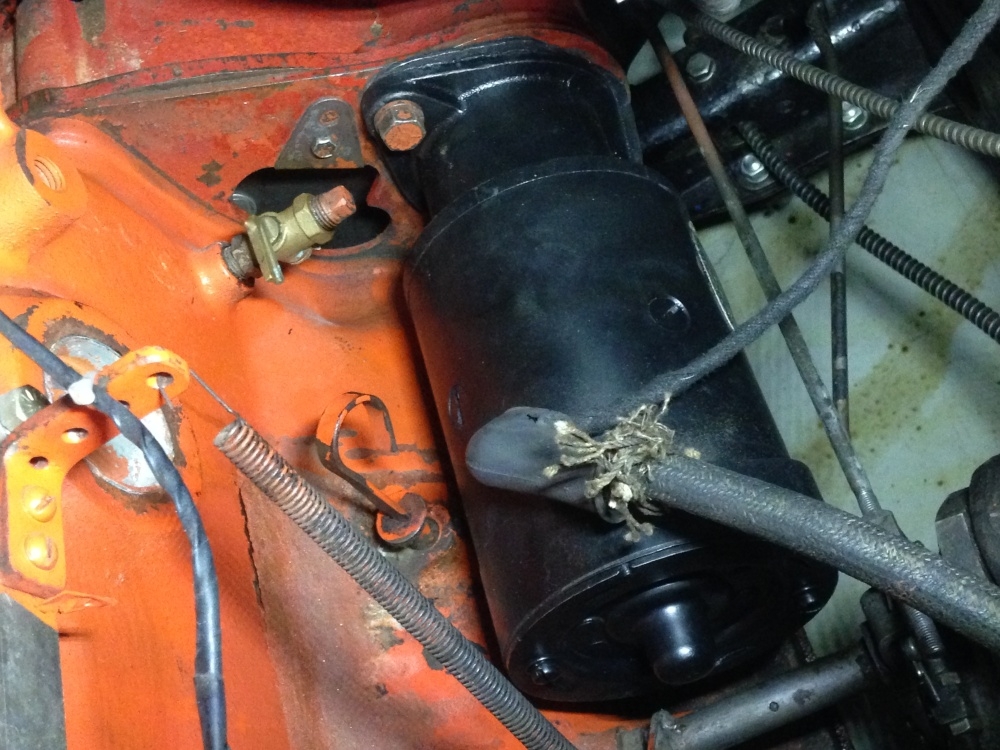
As seen on the picture, thereis a shim that is next to it and I do wonder if my initial reasoning is close or if I'm overthinking way too far. Since it has been rebuilt a couple of weeks earlier, could the shim prevents the bendix to fully mesh with the flywheel, thus making the teeth grinding sound? Because the more I canked the more frequent the sound was.0 -
In all my time messing around with Hudsons, ( since 1974) I've never seen a shim between the starter and it's mounting surface.0
-
The reason why the starter is mounted like this is due to the DG-200 automatic transmission I think since it doesn't have the Hyrdamatic (the factory that built it has burned to the ground back in 1953).0
-
I guess that’s why I’ve never seen it. We always had Dual Range or Stick shift.Max162 said:The reason why the starter is mounted like this is due to the DG-200 automatic transmission I think since it doesn't have the Hyrdamatic (the factory that built it has burned to the ground back in 1953).0 -
Update: I've removed the starter for inspection and there was not teeth missing or mangled. I also removed the shim and put it back to its place. Results: it was cranking ten times better, yet the car doesn't want to fire up.
While I was checking for any loose connection on the ignition system, I accidentaly touched the starter solenoid button and found something that baffles me a bit.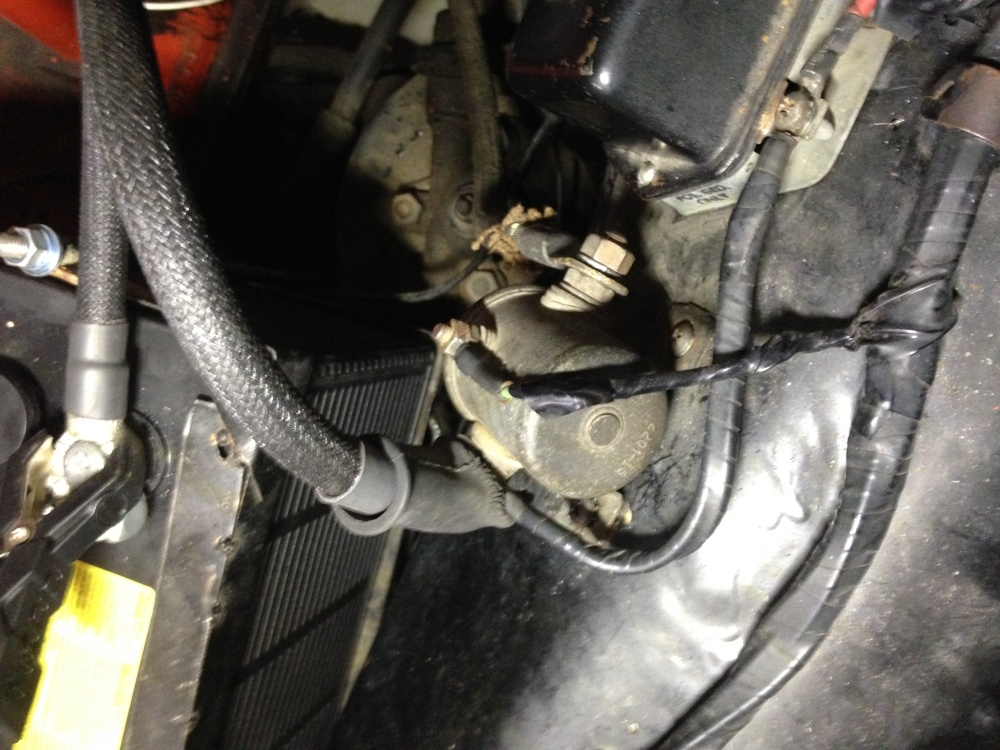
Is it normal for the solenoid to crank the engine by pushing its button WHILE the ignition switch on the dash is OFF and having the car's keys in my hands or did I connected the wires at the wrong spot? The discovery of it was quite interesting, but odd at the same time and I would like to know how the solenoid should properly work.
As for the car that doesn't want to start, my only hypothesis that I have in mind so far could be related to the ignition's lack of sparks ( the coil itself or the spark plug cables maybe ) ? I did checked distributor points and it was making spraks just fine.
0 -
Hey Max, yes that is normal. The solenoid is directly hot from the battery. That switch is meant to 'bump' the starter maybe to set points or if it jams.
It should have a protective screw on cover on it to keep it from accidentally getting pushed tho.
Jeff0 -
That's awsome. That can be a good way to check if I have sparks at the coil or at the spark plugs.jjbubaboy said:Hey Max, yes that is normal. The solenoid is directly hot from the battery. That switch is meant to 'bump' the starter maybe to set points or if it jams.
It should have a protective screw on cover on it to keep it from accidentally getting pushed tho.
Jeff 0
0 -
I made some inspections and it seems that I have no sparks at all, even though I did have a little before. Could be either the coil, the spark plug cables or the plugs themselves that are flooded?0
-
Points, condenser, coil. Are you sure the distributor is still turning as you crank the engine? As long as the plugs have a gap, they will fire if the other components work.0
-
As Mike says; points, condenser, coil. Typically I would start with the condenser.0
-
I solved the spark problem: I checked the points and just made them work a bit until they were making sparks on their own. From there I was able to crank the car until it finally woke up.

After that the car was running fine. I'll be able to ride it until the next winter comes.
Again, thanks for all your help and tips, I did learned quite a bit during the process.0 -
Are those modern points, Max?0
-
I don't think so, it was still the original distributor and nothing seems to have been modified inside. I also made a good ride with the car and minus a little rough idle it was ruuing great.0
-
Max as a matter of maintenance, when ever the vehicle is placed in storage the effects of chemical and electrical activity WILL change the characteristics of the otherwise operational vehicle. The corrosion on a set of points is due to the slight changes in the environment inside of the distributor cap. This will oxidize the points and the oxide is now an insulator that can stop them from operation. So remember to clean the point surfaces as well as the inside of the cap after storage.0
Categories
- 36.6K All Categories
- 85 Hudson 1916 - 1929
- 11 Upcoming Events
- 73 Essex Super 6
- 28.4K HUDSON
- 511 "How To" - Skills, mechanical and other wise
- 990 Street Rods
- 150 American Motors
- 170 The Flathead Forum
- 47 Manuals, etc,.
- 71 Hudson 8
- 40 FORUM - Instructions and Tips on using the forum
- 2.7K CLASSIFIEDS
- 592 Vehicles
- 2.1K Parts & Pieces
- 76 Literature & Memorabilia
- Hudson 1916 - 1929 Yahoo Groups Archived Photos
